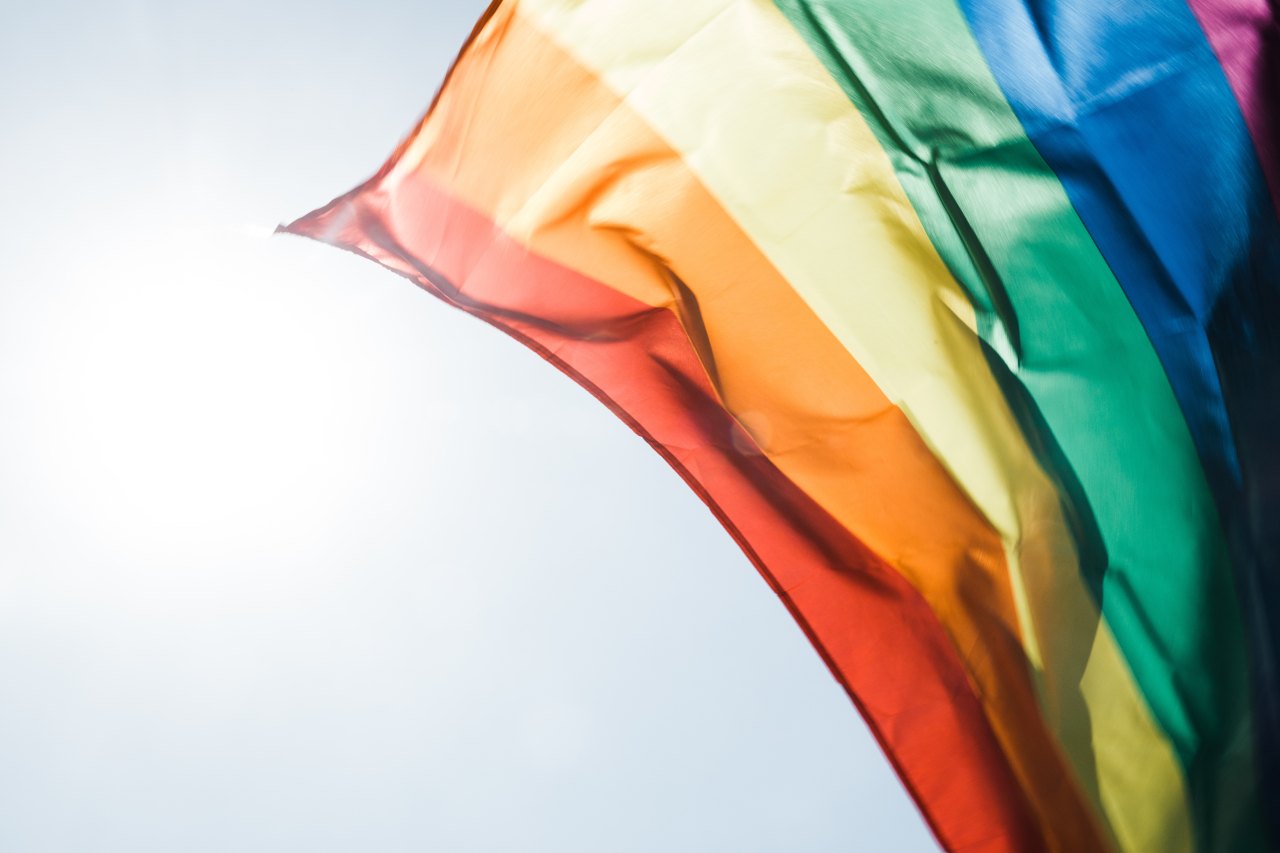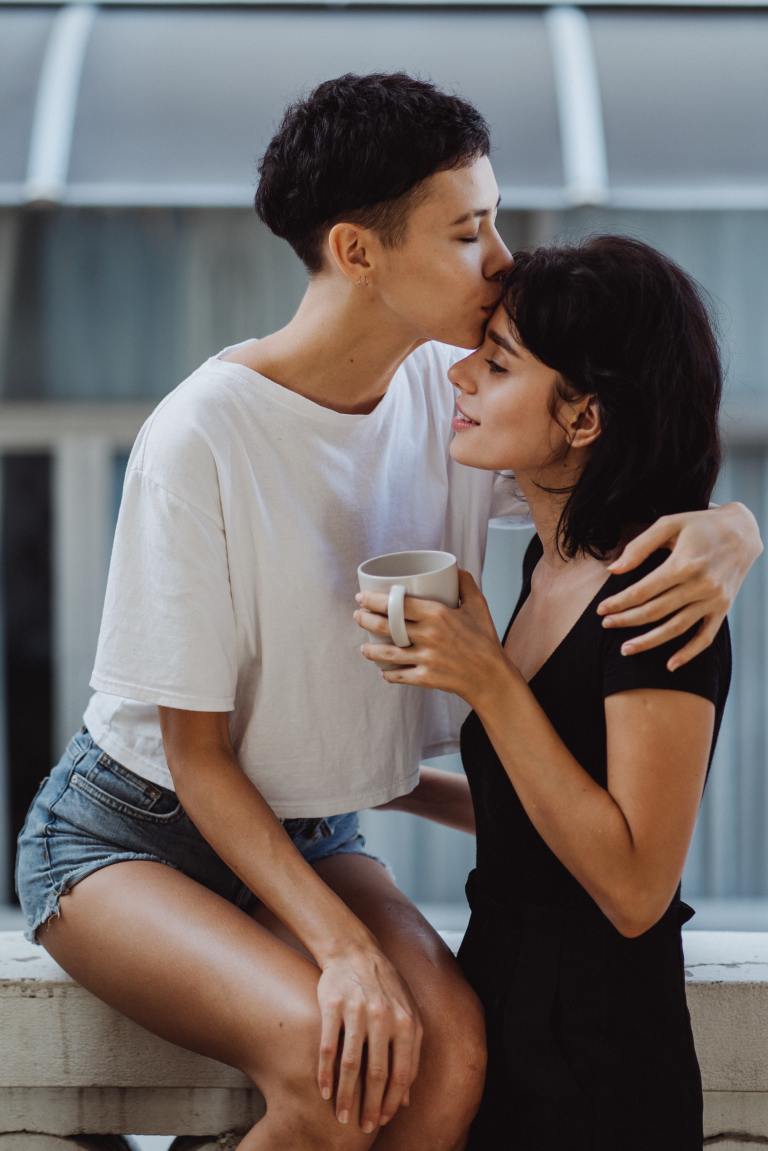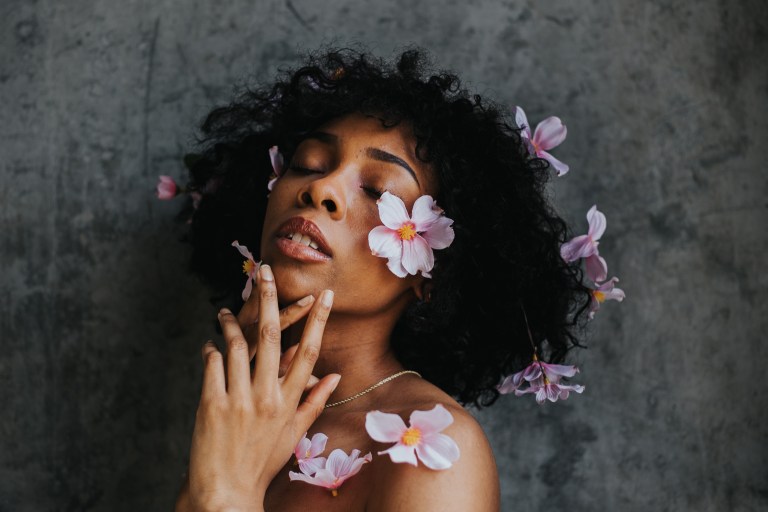
5 Nonbinary Celebrities You Should Absolutely Know About
As expanding ideas of gender slowly seep into mainstream public consciousness, there are more and more prominent figures who are finding it safe to come out as nonbinary or gender nonconforming.
As expanding ideas of gender slowly seep into mainstream public consciousness, there are more and more prominent figures who are finding it safe to come out as nonbinary or gender nonconforming. Here are 5 of some of the most famous nonbinary people you should know, spanning careers from theatre to music to publishing and presenting their gender in diverse ways.
1. Amandla Stenberg
https://www.instagram.com/p/BWThAe3liXc/?taken-by=amandlastenberg
An established actor, model, and activist by the age of 17, Amandla Stenberg has known the spotlight even before their fame skyrocketed following their role as Rue in The Hunger Games. Since then, Stenberg has used social media as a platform to speak out about issues that affect the LGBT community, people of color, the black community, and women. This earned Stenberg the title of “Feminist of the Year” by the Ms. Foundation for Women in 2015. That same year, Stenberg posted the video “Don’t Cash Crop on My Cornrows” on YouTube where they discuss Kylie Jenner’s cornrows and speak out on cultural appropriation.
As a black biracial queer person, Stenberg identifies as pansexual and non-binary, meaning they are attracted to all genders and they identify outside of the traditionally established gender binary.
Stenberg considers themselves an intersectional feminist and has appeared in magazines, interviews, and other videos taking an intersectional approach to topics about racism, misogyny, and marginalization of the LGBT community. For those of us who are used to seeing a largely whitewashed, cisnormative, and heteronormative narrative pushed to us in the media, Stenberg’s voice and presence is a vital force.
It’s also worth noting that Stenberg is not a distant character or an untouchable celebrity. They are young and raw and still figuring themselves out, as evidenced by the Tumblr exchange that was the first open declaration that Stenberg had conflicting feelings about their gender and pronouns.
When asked about their preferred pronouns, Stenberg responded, “I honestly don’t know…I mean they/them makes me feel comfortable but I know that the media and the general populace that follows me will critique it/not understand which makes me feel sad and almost more uncomfortable. So I guess she/her for now.”
After someone gave them a positive and affirming reply Stenberg wrote, “Damn you right. They/them it is.” Since then, Stenberg goes by the gender-neutral “they” and their profile has read “17 / non-binary / she/her or they/them / bisexual” since June of 2016. The way Stenberg personally engages with other queer youth and youth of color through social media in very personal ways is not only inspiring to those of us who need nonbinary role models (especially nonbinary people of color), but also encourages us to challenge cisnormativity and break the gender binary.
2. Justin Vivian Bond
“For me to claim to be either a man or a woman, feels like a lie. My identity falls somewhere in the middle and is constantly shifting.”
Not your average drag queen, Justin Vivian Bond gained popularity first as Kiki Durane in the Kiki and Herb drag duo, but has since then been known for everything from LGBT activism to acting to cabaret performance. Using the gender neutral pronoun ‘v’ and honorific “Mx.”, Bond is nonbinary and has been described as “a tornado of art and activism.”
Bond’s use of ‘v’ as a pronoun is also intended to be a reference to v’s middle name, Vivian. “As for Vivian, that’s my self-given middle name,” Bond explains. “Justin is a very male-identified name, and I wanted something that would balance it. I had an uncle named Vivian Francis. He was a wonderful person, but he changed his name to Victor. He didn’t like being Vivian. But it’s fine with me.”
The 53-year-old Bond has amassed a lifetime of performance work across a number of genres but v always proves daring and original in every appearance. Bond released v’s first album after an improvised concert with two experimental artists in San Francisco; since then Bond’s solo music career is full of spontaneous releases and has been inspired by multiple genres, including 70s folk and pop. Bond is also a theater and screen actor and has appeared in films such as cult/underground filmmaker Jon Moritsugu’s Mod Fuck Explosion and in projects such as Jukebox Jackie where v played Jackie Curtis, another transfeminine person who initially rose to fame as a “Warhol Superstar”.
Bond’s performance has always been intentionally infused with notes of queer activism from as early as the 80s, and much of v’s creative expression has been inspired by struggles such as the trauma of the AIDs crisis and the difficulties that transfeminine nonbinary people experience.
3. Angel Haze
https://www.instagram.com/p/BR6SpNyhD2E/?taken-by=angxlhxze
“When I hear people use the word ‘her’ around me I’m like, Who are they talking about, you know?” Haze says. “I just have felt this about myself for so long.”
Though you may know them from the deeply moving song “Battle Cry” featuring Sia, Angel Haze has been shining both as a rapper and a voice for survivors of sexual assault and nonbinary people of color.
Haze is a black and Native American biracial person and their first EP, Reservation, was intended to be a celebration of Haze’s heritage. Other projects, such as Haze’s revamped cover of Macklemore’s Same Love reflect their identity as pansexual and their experiences growing up in a homophobic family as a young queer person. With a Pentecostal upbringing, Haze experienced marginalization in a community that they have described as a “cult”.
The past trauma they experience plays a pivotal role in many of their songs. Set to Eminem’s Cleaning Out the Closet, Haze raps about their child sexual abuse in a cover that blows the original out of the water in terms of complexity and originality.
Time and time again, Haze has shown that they are not afraid to be confrontational and direct in not only their music but also in everyday situations of bigotry. Haze famously called out the press in 2014 for persistently describing them and their girlfriend Ireland Baldwin as “gal pals” and “best friends” rather than acknowledging the legitimacy of their relationship—noting a troubling pattern in media where couples (especially interracial couples) that are perceived as women-loving-women tend to be erased, desexualized, and deromanticized.
“I feel like my agenderness and my gender identity have evolved,” Haze admits. “I spent a lot of time, in my earlier years of limelight, suppressing myself.”
As Haze tackles personal issues about their own identity and trauma, they are also engaging with a young queer audience of color and working on empowering more than just themself. Their resistance to labels and identifiers is a struggle that Haze has alluded to, using an excerpt from Andrea Gibson’s poem Andrew where they quote, “No, I’m not gay, no, I’m not straight, and I sure as hell am not bisexual, damn it I am whoever I am when I am it.”
At the same time, Haze has embraced the comfort of identifying as agender, saying that it is a relief to assert themselves as existing outside of the binary. They’ve also mentioned feeling a connection to two-spirit identities and described their gender identity as being strongly related to their Creole, Cherokee, and Blackfoot heritage.
4. Kate Bornstein
“When you look at nature, everything is some shade of gray – it’s just not logical that gender isn’t the same.”
Having devoted the last several decades of hir life to playwriting, gender theory, performance art, and LGBTQ activism, Kate Bornstein’s body of work spans everything from plays to books to articles. On hir self-titled blog, ze describes hirself as “A Queer and Pleasant Danger.” The quip is a play off of the title of hir 2014 publication, A Queer and Pleasant Danger: A Memoir, in which ze goes into detail on hir experiences growing up as a queer and gender nonconforming individual in the 1950s and 60s, joining the Church of Scientology, and finally beginning hir transition at the age of 35 in 1984.
“The true story of a nice Jewish boy who joins the Church of Scientology and leaves twelve years later to become the lovely lady she is today”—witty and attention-grabbing, lines like these are just one of the hallmarks of Bornstein’s dramatic, clever writing style. Ze’s work is often intensely personal, stemming from Bornstein’s own experiences and revelations regarding hir relationship with hir gender identity, sexuality, queerness, and the rest of the LGBT community. With Bornstein’s own trans and queer narrative as the foundation, ze builds on it with discourse and criticism on topics ranging from the gender binary to popular misconceptions about gender and gender roles.
Bornstein’s work has contributed significantly to contemporary gender theory, queer theory, and women’s studies, and it’s no rare occasion to find hir books Gender Outlaw and My Gender Workbook in courses and workshops related to gender and LGBT issues.
Though Bornstein recently garnered mainstream attention due to hir appearance on “I Am Cait”, where ze has a conversation about gender, transitioning, and public perceptions of the transgender community with Caitlyn Jenner, ze has been a notable and well-respected figure in the trans community for decades.
Hir work and public persona has always seeked to break established norms and challenge the unspoken rules of our society, even within LGBT circles; for example, hir enthusiastic reclamation of transmisogynistic slurs were met with disdain by author Jenny Boylan on I Am Cait.
“Tr*nny is my name,” Bornstein responded when confronted by Boylan. “It’s who I am.”
5. Elly Jackson
https://www.instagram.com/p/BAz55rdQ8Nz/?taken-by=larouxroux
If Elly Jackson doesn’t ring a bell, then you might instead know them as the singer of the Grammy award-winning synthetic pop duo La Roux. The current sole member of the band, Elly Jackson’s iconic red hair, androgynous appearance, and energizing electronic music has garnered a largely queer cult following in addition to mainstream and worldwide fame.
Their singles “Bulletproof” and “In For the Kill” were smash hits in 2009, and since then Jackson’s career has steadily thrived even after the departure of their record producer Ben Langmaid from La Roux. Though La Roux isn’t making the charts or the headlines much anymore, it’s not a coincidence that their popularity started to dip after coming out as nonbinary.
Jackson’s large LGBTQ following has resulted in significant media speculation regarding their sexuality and gender identity. Though Jackson has explicitly stated, in response to a question in an interview, that they do not identify with either the male or female genders, not much else is known about Jackson’s sexuality and gender—simply because they choose not to discuss it.
“It’s all very well people telling me to be open about it, but it will have an impact on my life. Why should I have to bear the brunt of what would happen?” Jackson says. “All I know is that if it’s not something I have any interest or desire to talk about, then that needs to be my only reason.”
Here Jackson makes a good point: publicly coming out as queer is always a safety issue, and the choice to put oneself in danger isn’t one that should be made as a result of pressure or persuasion. In spite of Jackson’s insistence on keeping their identity and personal life private, the subject of Jackson’s sexuality and gender continues to come up in interviews where they often have to deflect the topic or turn to discussing their androgyny.
What Jackson has claimed, however, is most certainly non-binary-hood. They have repeatedly stated that they do not feel like or consider themselves a man or a woman. This identity has been a driving force in their career, with Jackson’s entire appearance and persona crafted with the goal of androgyny. Even the name “La Roux” (“the red-headed one”) is intended to blur the masculine and feminine by mingling the French masculine “le roux” and feminine “la rousse.” ![]()











